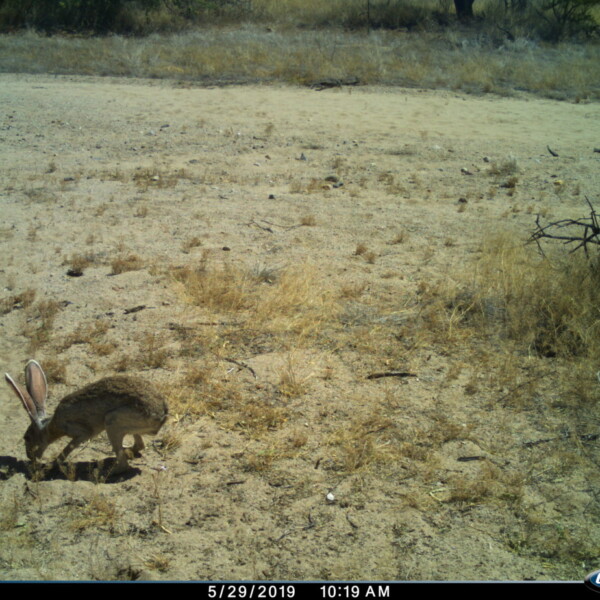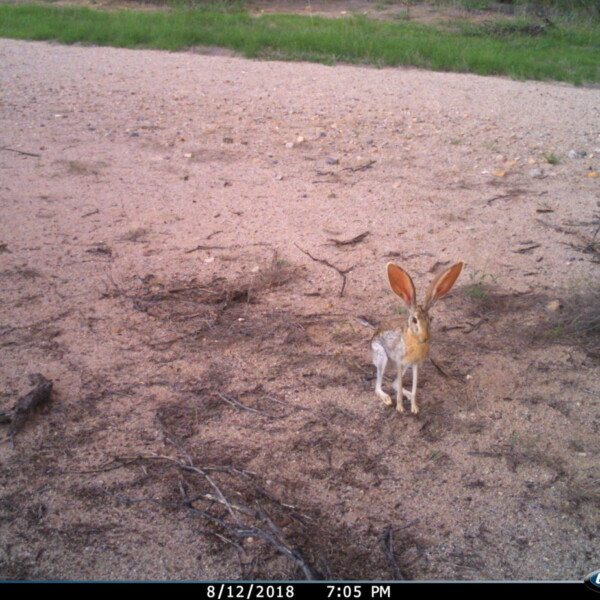Surprisingly many species in the southwest are understudied, and the antelope jackrabbit (Lepus alleni) is one of them. Found only in Arizona and Northwestern Mexico. The antelope jackrabbits live in desert shrub and grasslands. They prefer open spaces where they can spot and run away from predators in plenty of time.
The antelope jackrabbit is one of the largest jackrabbit species. Almost as tall as a medium sized dog, their long ears and legs add to their size. However, they are only 8 pounds on average!
The antelope jackrabbit looks like the other native jackrabbit of the region, the black-tailed jackrabbit (Lepus californicus). But the antelope jackrabbit’s tan-brown body, white sides, and white-rimmed ears distinguish them from the black-tailed jackrabbit. The black-tailed jackrabbit has black tipped ears.
The antelope jackrabbit is built to live in the desert. Their fur is light and reflects the sun’s rays, while their large ears help dissipate heat. Another method they use to deal with the heat is to avoid it. Antelope jackrabbits are active in the morning, evenings, and night. Foraging on grasses, leaves, and even cacti. In the heat of the day, you can find them resting at the base of a shrub or tree.
Female jackrabbits give birth to two young and put most of their energy investment in the gestation period. When the young are born with their eyes open and ready for the world. This strategy of having precocial young allows the young jackrabbits to be independent from their mothers a few days after birth.
How You Can Help
Help Sky Island Alliance maintain an open corridor between the United States and Mexico for the antelope jackrabbit and the countless other species by donating today. Your continued dedication and support are vital to keep our scientists and volunteers on the ground and able to collect the data we need to fight the wall.
Sources



